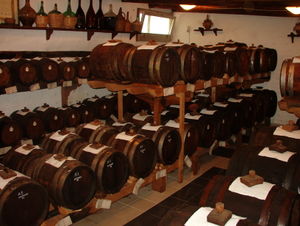Total of $0.00
A Brief History About Balsamic Vinegar
A Brief History About Balsamic Vinegar
The same country that brought you such notable artists as Michelangelo and Leonardo da Vinci, as part of the Renaissance, also provides a culinary artistry that offers incomparable quality and taste – the wonderfully adaptable aged balsamic vinegar, aceto balsamico di Modena. Balsamic vinegar can only be produced in the regions of
Modena and Reggio in Italy. The first historical reference to balsamic vinegar dates back to 1046, when a bottle of balsamic vinegar was reportedly given to Emperor Enrico III of Franconia as a gift. In the Middle Ages, it was used as a disinfectant. It also had a reputation as a miracle cure, good for everything from sore throats to labor pains.
Balsamic vinegar is an aged reduction of white sweet grapes (Trebbiano for red and Spergola for white sauvignon) that are boiled to a syrup. The grapes are cooked very slowly in copper cauldrons over an open flame until the water content is reduced by over 50%. The resulting “must” is placed into wooden barrels and an older balsamic vinegar is added to assist in the acetification. Each year the vinegar is transferred to different wood barrels so that the vinegar can obtain some of the flavors of the different woods. The only approved woods are oak, cherry, chestnut, mulberry, a cacia, juniper, and ash. The age of the vinegar is divided into young – from 3 to 5 years maturation; middle aged 6 to 12 years and the highly prized very old which is at least 12 years and up to 150 years old.

